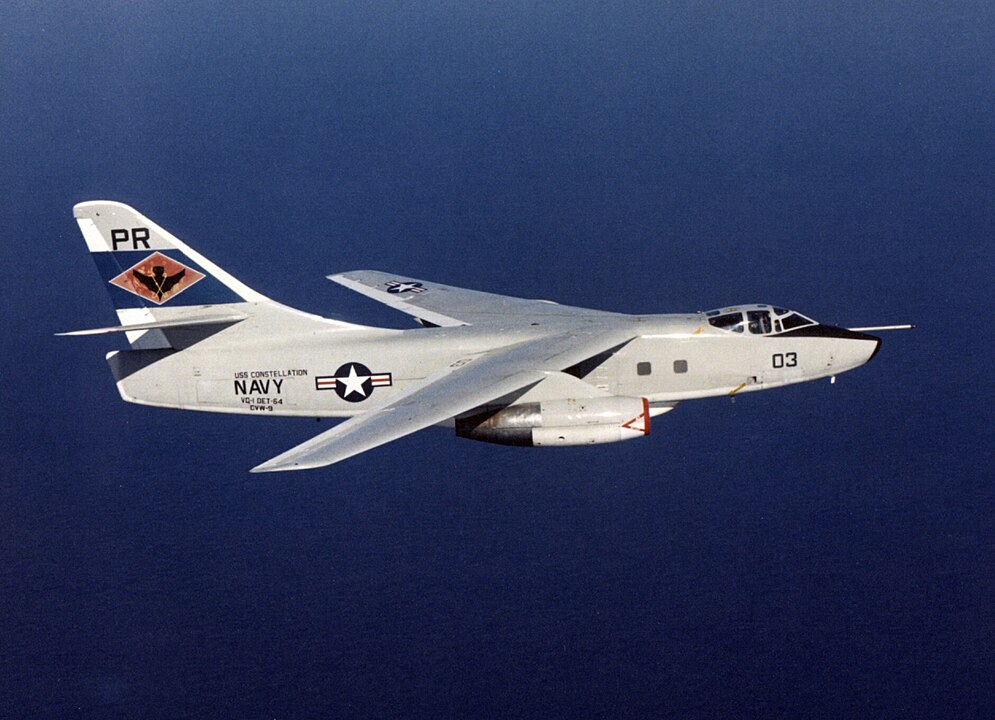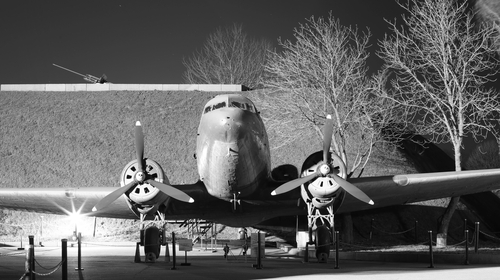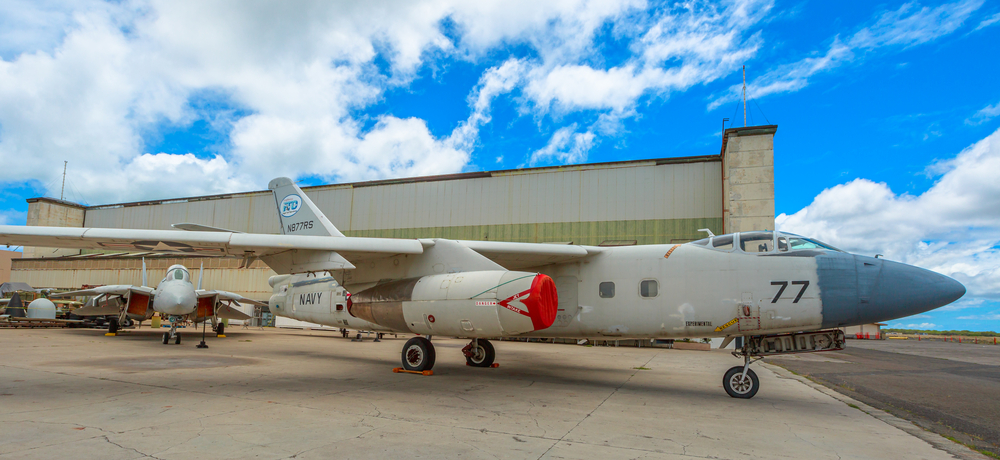
In the annals of naval aviation history, few aircraft have exhibited the versatility and longevity of the Douglas A-3 Skywarrior. Designed originally as a strategic bomber for the United States Navy, the Skywarrior, affectionately known as the “Whale” due to its substantial size, went on to serve the US Navy for an impressive 35 years.

It was a high-altitude workhorse that played significant roles in the Cold War and beyond, particularly excelling in electronic intelligence and reconnaissance missions.

The Skywarrior entered service in the mid-1950s and was the heaviest operational aircraft to routinely operate from aircraft carriers. It was a product of innovation, responding to the early post-war years when the U.S. Navy began considering jet power to enable carrier-based aircraft to carry out strategic bombing capabilities.
The resulting A-3 Skywarrior, designed by the legendary Douglas Aircraft Company designer Ed Heinemann, first took flight on 28 October 1952 and was officially introduced to the fleet in 1956.

The Skywarrior was initially envisaged to be deployed from the planned supercarriers of the United States-class, but Heinemann’s design allowed for operation from existing carriers, a feature that perhaps contributed to its extended service life.
Despite challenges, including development problems with its engines, the Skywarrior’s adaptation to evolving requirements allowed it to thrive.

Throughout the Vietnam War, the A-3 Skywarrior showcased its multifaceted capabilities, serving not only as a bomber but also in electronic warfare, aerial refueling, and reconnaissance roles. It was during this time that the aircraft truly shone, demonstrating its strategic importance. For instance, the A-3 variants played a key role in the tanker and electronic warfare support during most of the Vietnam War.

The EA-3Bs from Fleet Air Reconnaissance Squadron 1 (VQ-1) flew critical electronic reconnaissance missions, providing essential intelligence on enemy movements and electronic capabilities.

The A-3’s adaptability was also seen in its conversion to the KA-3B tanker variant, which supported carrier air wings with aerial refueling capabilities that proved vital during the war.

The “Whale” also saw action in photographic reconnaissance with the RA-3B version, providing detailed imagery and intelligence. The aircraft’s long-range and hefty payload capacity, coupled with internal modifications, allowed these variants to fulfill missions that were critical to the success of naval operations.

The Skywarrior’s service extended beyond the Vietnam War, transitioning to a vital role in Cold War reconnaissance missions.

The EA-3B variant, specifically modified for electronic intelligence against the Warsaw Pact, was part of a fleet that flew missions globally beginning in 1956.

Despite its impressive service record, the A-3 Skywarrior faced various challenges. Notably, it was one of the few military aircraft to not be fitted with ejection seats, a decision based on its high-altitude flight profile, which later led to gallows humor amongst its crews who quipped “A3D” stood for “All Three Dead.” Moreover, the Skywarrior’s size made it an anomaly aboard the cramped confines of aircraft carriers.
related images you might be interested.









